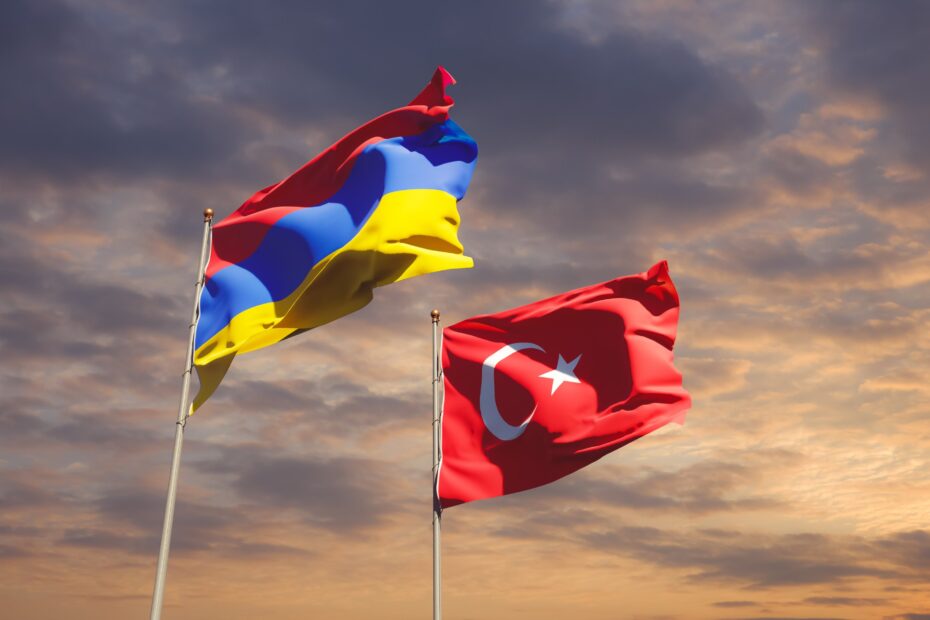In recent weeks, the possibility of reconciliation between Armenia and Turkey has been actively discussed. In particular, the aid sent from Armenia to Turkey after the earthquake in February was hotly debated. This action by Armenia was presented by many pro-government politicians as the right decision in the context of the normalization of relations between two neighbors.
In order to transfer the aid, Margara Bridge linking Armenia and Turkey, which had been closed by Turkey for the last 30 years, was open for “one time and one way use only.”
Moreover, the Armenian foreign minister visited Turkey and met with his Turkish counterpart.
The impression was created that in this situation, the reconciliation of Armenian-Turkish relations may be at hand. Of course, everyone understands that there is no alternative to rapprochement between two neighbors and neighbors cannot have closed borders forever.
All three former presidents of Armenia had similar approaches, and for all three of them, the reconciliation of Armenian-Turkish relations was one of the main challenges to their foreign political agendas, but what price they were ready to pay for the settlement of those relations is another question.
During the developments last month, we witnessed some other signals as well. While Armenia was sending aid to Turkey, Turkish President Tayyip Recep Erdoğan, thanking the Azerbaijani rescuers, noted that “the Azerbaijani brothers were on the side of the Turks after the disaster as the Turks were on the side of Azerbaijan during the 44-Day War.”
And this happened on the eve of the upcoming visit of the minister of foreign affairs of Armenia to Turkey.
A similar statement came from the Turkish interior minister days later.
What is actually happening during the normalization process of Armenian-Turkish relations is difficult to say, because there seem to be significant differences in public and behind-the-scenes diplomatic processes. Moreover, information on behind-the-scenes diplomacy is extremely scarce and is mostly seeping through Turkish media sources. According to them, the special representatives of Armenia and Turkey had more than 500 phone conversations as of August 2022. This means that the parties communicate with each other literally every day, but this fact was hidden from Armenian society until published by the Turkish media.
It is obvious that Armenia is moving towards the normalization of Armenian-Turkish relations, having met Turkey’s two main preconditions. The Armenian authorities handed over Artsakh to Azerbaijan, as Turkey had been demanding for 25 years, and the Armenian authorities removed the issue of the international recognition of the Armenian Genocide from their foreign political agenda, as Turkey had been demanding for 100 years. As these two have happened, there can be a logical conclusion that the borders have to be opened and diplomatic relations have to be established. If this does not happen, it means that Turkey has set additional preconditions for Armenia during behind-the-scenes diplomacy.
Of course, we remember Erdogan’s statement that Armenia should provide a corridor between Azerbaijan and Nakhichevan (the “Zangezur Corridor”). We also remember that Turkey announced that it will regulate relations with Armenia when it receives a green light from Azerbaijan. Azerbaijan, in its turn, declares that Sevan, Syunik and Yerevan are historic Azerbaijani lands. It is obvious that Turkey is not really going to regulate relations with Armenia, at least at this stage, and is putting forward additional preconditions.
As I mentioned in one of my previous columns, back in the early 1990s, Turkey set as preconditions for the normalization of relations with Armenia, not only the handing over of Artsakh to Azerbaijan and getting rid of the issue of international recognition of the Armenian Genocide, but it also brought forward “secondary” preconditions. In particular, Ankara suggested that Armenia make an unequivocal statement about not having any territorial claims against Turkey, and edit the declaration of independence of Armenia, which refers to Eastern and Western Armenia.
Turkey also demanded the removal of the image of Mount Ararat from the coat of arms of Armenia, because it is perceived in Ankara as a territorial claim against Turkey. This information was revealed from the US State Department’s declassified cables, because Washington was the mediator in the settlement of relations between Armenia and Turkey back in those days.
In general, Turkey has always mentioned the removal of the image of Mount Ararat from the coat of arms of independent Armenia or Soviet Armenia. Let us not forget that during football diplomacy in the late 2000s, Turkey also demanded the image’s removal from the logo of the Armenian football team. A month after the football match, Mount Ararat was put back in the logo of the football federation with a new design. In other words, Turkey has always focused on this issue.
As a result, we can conclude that although the Armenian side has met Turkey’s main preconditions, Turkey has put forward additional preconditions, which have remained on the Turkish foreign policy agenda for 30 years. It is difficult to say what the red lines are in these matters, because the Armenian authorities are known for their amazing ability to cross all possible red lines.
The fact remains that Turkey does not want to establish relations with Armenia until it receives everything, and even in the case of establishing relations, no one can guarantee the elimination of the threat to Armenia from Turkey. After all, we have seen it all in the case of Syria which had fraternal relations with Turkey before being stabbed in the back by Erdogan.
